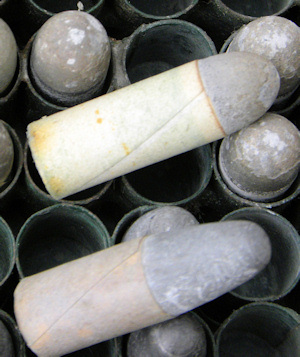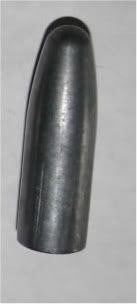Saltner I roll the direction shown in your bottom picture. As to the patch coming unrolled, I don't think it's going to happen. There will be anywhere from 8000-18000 lbs psi pushing the patched bullet down the barrel, the bullet should be bumped up to fill the grooves thereby trapping the paper between the bullet and the barrel wall.

|
   
   
|


|




 Reply With Quote
Reply With Quote














